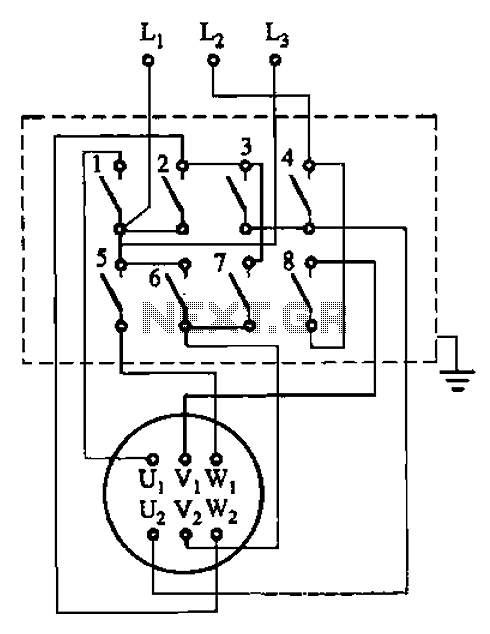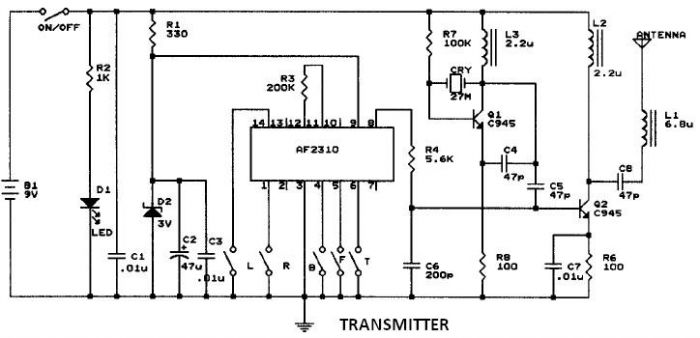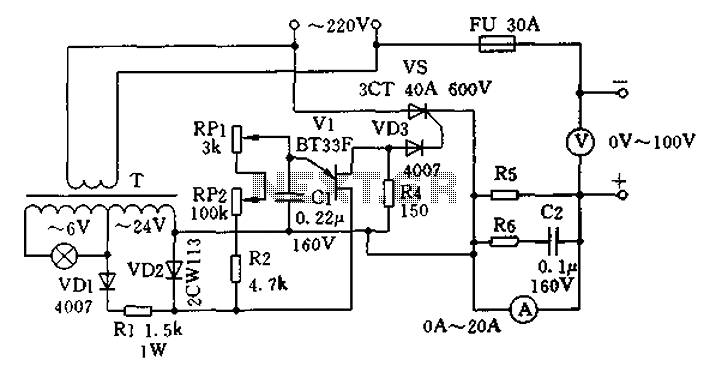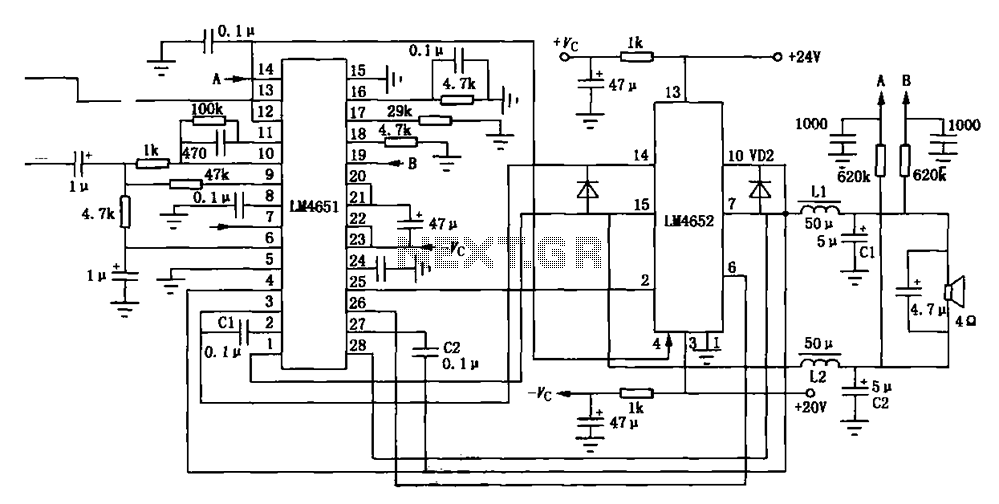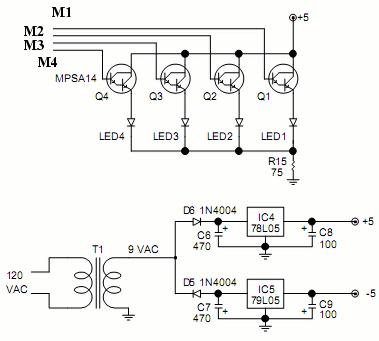
Switch off delay circuit by 2N4871
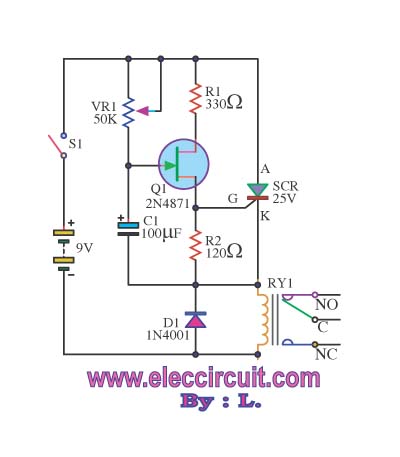
This circuit prevents surges caused by power failures or interruptions, protecting electrical appliances from damage. It automatically switches to a short circuit mode when necessary.
The surge protection circuit is designed to safeguard sensitive electronic devices from voltage spikes that can occur during power outages or fluctuations. The core functionality of this circuit involves a surge protector that detects abnormal voltage levels and responds by disconnecting the load from the power source.
Key components of the circuit typically include a voltage sensor, a relay or a transistor switch, and a fuse. The voltage sensor continuously monitors the incoming voltage level. When the voltage exceeds a predetermined threshold, indicating a surge, the sensor triggers the relay or transistor to open the circuit, effectively disconnecting the load.
In addition, the circuit may incorporate a capacitor and a resistor to smooth out any transient voltage spikes. A fuse is also included to provide an additional layer of protection, blowing in the event of a sustained overcurrent condition, thus preventing damage to the circuit components and connected devices.
The design may also feature an indicator LED that illuminates to signal when the circuit is in surge protection mode, providing a visual cue to the user. For enhanced reliability, the circuit can be housed in a durable enclosure that protects it from environmental factors such as dust and moisture.
Overall, this surge protection circuit plays a critical role in maintaining the integrity and longevity of electrical appliances by ensuring they are shielded from harmful voltage fluctuations.This circuit prevents surges. From the opening is switched off or power failure. The damage to electrical appliances. The circuit will switch to use a short.. 🔗 External reference
The surge protection circuit is designed to safeguard sensitive electronic devices from voltage spikes that can occur during power outages or fluctuations. The core functionality of this circuit involves a surge protector that detects abnormal voltage levels and responds by disconnecting the load from the power source.
Key components of the circuit typically include a voltage sensor, a relay or a transistor switch, and a fuse. The voltage sensor continuously monitors the incoming voltage level. When the voltage exceeds a predetermined threshold, indicating a surge, the sensor triggers the relay or transistor to open the circuit, effectively disconnecting the load.
In addition, the circuit may incorporate a capacitor and a resistor to smooth out any transient voltage spikes. A fuse is also included to provide an additional layer of protection, blowing in the event of a sustained overcurrent condition, thus preventing damage to the circuit components and connected devices.
The design may also feature an indicator LED that illuminates to signal when the circuit is in surge protection mode, providing a visual cue to the user. For enhanced reliability, the circuit can be housed in a durable enclosure that protects it from environmental factors such as dust and moisture.
Overall, this surge protection circuit plays a critical role in maintaining the integrity and longevity of electrical appliances by ensuring they are shielded from harmful voltage fluctuations.This circuit prevents surges. From the opening is switched off or power failure. The damage to electrical appliances. The circuit will switch to use a short.. 🔗 External reference
